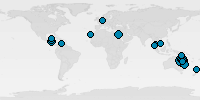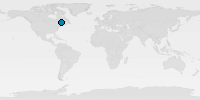
The California Channel Islands offer scuba divers around the world a diverse habitat in as well animal as plant life.
| Inserted/Added by: | lars, © Author: Lars Hemel |
| Rated: | Rated 1.6, 11 votes |
Send us your images for this dive region[Add Image][Add Movie]
The Channel Islands of California consist out of 8 main islands of which only Catalina Island is permanently inhabited. The Northern Channel Islands include San Miguel, Santa Rosa, Santa Cruz and Anacapa. There is some great hiking in San Miguel, the beaches around Santa Rosa are brilliant and a remote quiet place can be found when visiting Santa Barbara Island. These northern islands together with the small island of Santa Barbara form the Channel Islands National Marine Sanctuary, one of the richest and most diverse habitats for underwater marine and plant life. Warmer currents from the south collide with nutrient rich but colder waters from the north, giving this park its diverse ecology and nickname of America's Galapagos. The remaining Southern Channel Islands are named San Nicolas, San Clemente and Santa Catalina, the last one being a popular place with the two larger touristic towns of Avalon and Two harbors. Far to the southwest are the Cortes Bank and Tanner Bank, both large completely submerges underwater plateaus with pinnacle-dives and remoteness at best.
The busiest dive sites are around Anacapa and Santa Cruz since they are close to Santa Barbara and Ventura County. Santa Catalina, close to Los Angeles County, is a tourist paradise with plenty of things to do. Scuba divers are blessed with a visibility of often more than 40 feet and a whole range of variety. You can find huge areas with kelp forests, but also tropical fish, sharks and invertebrates. There are dive sites with very good chances of diving with sea lions and seals. From July to September you can spot a lot of migrating blue whales.
[Add Message]Messages from readers:
[Add Divelog]Divelogs from members:


